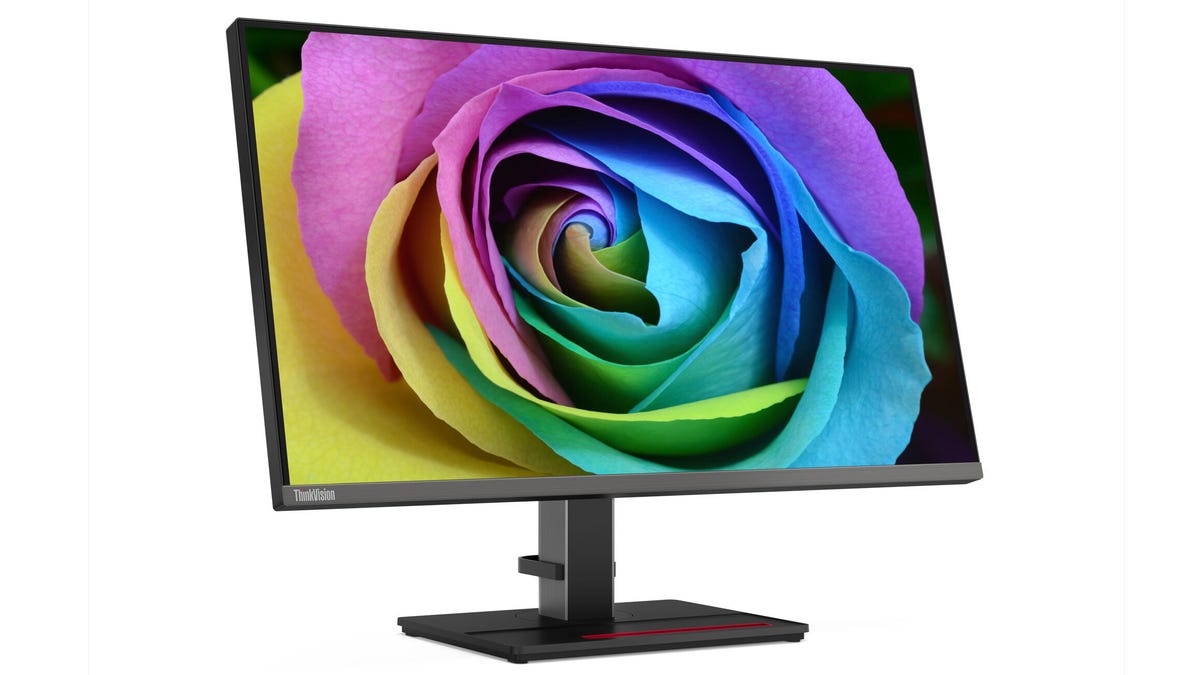Lenovo ThinkVision Creator Extreme monitor meanders into pro territory
The $2,500 HDR display launched for CES 2020 seems like a decent compromise between price and pro capabilities, while the new $900 Qreator 27 4K monitor goes wide gamut.

The ThinkVision Creator Extreme.
At the moment, there are only two pro monitors available incorporating Mini LED technology, both 32 inches: the $5,000 Apple Pro Display XDR and the $4,000 Asus ProArt PA32UCX. Asus' even more spectastic PA32UCG is on deck, likely with a price in the Apple ballpark. But Lenovo's using CES 2020 to roll into the fray with its ThinkVision Creator Extreme, at the significantly lower price of $2,499 -- as long as you're willing to make some sacrifices.
It's only 27 inches and at DisplayHDR's 1,000 nits doesn't quite hit the brightness highs of 1,200 nits and above of the others. But it incorporates a similar 1,152-zone Mini LED array to the Asus, at the same 4K resolution, and with full coverage of the P3 color gamut.
Mini LED backlights are becoming the darlings of the high-end monitor world -- sort of. They're one of the most efficient ways of getting usable high-brightness HDR (1,000 nits or more), where "usable" means enough local-dimming zones that you don't have serious blooming artifacts (for example, white bleeding into the surrounding blacks), consistent color and contrast across the screen and so on. You know, things that are essential for color-critical work.
There's a phone holder in the base.
Key details for the Lenovo are a bit thin at the moment -- there are no specifics about factory or manual calibration, accuracy or reference color spaces in hardware, for example -- the most we've gotten is "factory calibrated" and "supports multiple HDR formats" which I suppose means at least Hybrid Log Gamma and Dolby Vision. It does incorporate Lenovo's new Smart Power, which regulates power delivery over the 90 watt USB-C connection.
Like many advanced monitors, there's quite a gap between announcement and availability; in this case, we won't see it until April 2020.
The Qreator 27.
Lenovo must have used up all its Cs with its spate of new "Creator" products, because it dubbed the new consumer monitor targeting "content and media creators" the $900 Qreator 27. It's a 4K, 27-inch, DisplayHDR 400 monitor with 98% P3 gamut coverage that has a novelty Crystal Sound Display -- it vibrates the screen in conjunction with the audio. (It's unlikely to be the same as the Crystal Sound found in LG's OLED displays, which actually produces the sound, though.)
It also has a wireless charging pad built into the base and also uses Smart Power for its 80-watt USB-C connection. It will be available in March.
The stand is pretty, but the design precludes height adjustments. It's also used by the new Q27h, albeit without the charging pad. The Q27h is an upscale version of the current Q27q that seems to be slightly brighter and adds USB-C support. It will cost $350 when it ships in April.

